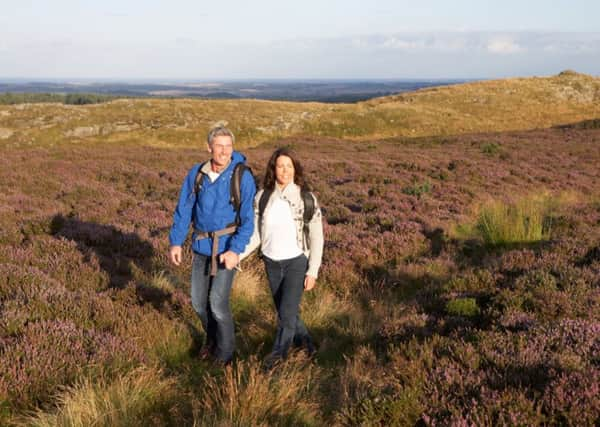Generation of active Scots heading to the gym and ditching football


Traditional sports such as football, golf and bowls have seen a dip in participation over the past decade in favour of yoga, keep fit and aerobic classes.
The rising physical activity levels has been hailed as a “real success story” by political leaders who say it can have huge benefits for physical and mental health.
Advertisement
Hide AdAdvertisement
Hide AdA massive rise in walking among the wider population has been the key driver in growing activity levels, the Scottish Household Survey for 2016 shows. The Scottish Government is keen to capitalise on this with the roll-out of the recent Daily Mile campaign in schools and offices across the country.
But there remains a class divide among Scots over the exercise issue with people in the most deprived areas less likely to go jogging or visit the gym for keep fit classes than their affluent counterparts.
Men are also more likely to take part in sports than women, while activity levels also tail off as people get older.
Those taking part in physical activity, including walking, has jumped from 72 per cent to 79 per cent since 2010, a rise of more than a quarter of a million adults. Trips to the gym are up from 11 per cent to 14 per cent, according to the survey of Scots’ activity levels over the previous four weeks.
SNP MSP James Dornan hailed the benefits of exercise after recently starting with a personal trainer in his mid-60s.
“Physical activity can have huge benefits for both physical and mental health, and the rise in Scots taking part in regular exercise is a real success story,” he said.
“Strength training in particular can have real benefits for people of all ages and walks of life – it’s no longer just for the Arnies of the world.”
Physical inactivity is the fourth leading cause of death globally and contributes to nearly 2,500 deaths in Scotland annually, costing the NHS around £94 million.
Advertisement
Hide AdAdvertisement
Hide AdThe last five years have seen a marked rise in the number of people deciding to get active This coincided with Glasgow being awarded the 2014 Commonwealth Games, along with the event itself and aftermath. Ministers were keen to use he legacy of this event to secure a more active nation.
Recreational walking is by far the most popular kind of physical activity among Scots. About 67 per cent of adults surveyed, the equivalent of about 2.7 million people, said they walked for about half an hour.
Public Health Minister Aileen Campbell said the rise in walking is being “championed” by the Scottish Government through its ambition to make Scotland the “world’s first Daily Mile nation”.
She added: “By walking just one mile a day, people can make huge changes to their lives. Something as simple as a 15 minute walk each day and being more active generally can improve mental and physical health.
“It is cost-effective and demonstrates that prevention really is better than cure. The health risks are stark: seven Scots die every day due to inactivity, often long before they have to. 2018 is the year to get Scots more active.”
The shift away from traditional sports has seen fewer Scots taking part in football, golf, snooker and bowls which were all down by up to three points over the past decade, according to the annual survey of about 10,000 adults.
This has been complemented by a rise in popularity among those using the gym and doing weights, as well as keep fit and aerobic classes which rose by 11 per cent and 12 per cent respectively to 14 per cent.
Men are more likely to take part in physical activity than women, while just half of older Scots above the age of 75 say that they did any kind of sport, including walking.
Advertisement
Hide AdAdvertisement
Hide AdAmong the most deprived 20 per cent of Scots, just 69 per cent took part in any sporting activity - compared with 87 per cent among the least deprived.
But Tory health spokesman Miles Briggs played down the SNP’s attempts to take responsibility for the rise in activity levels.
“It looks like the SNP has been at the Christmas sherry a bit too much. We’re know they like to claim credit for everything in Scotland, but this is getting ridiculous,” Mr Briggs said.
“The truth is they are still lightweight when it comes to delivery.”